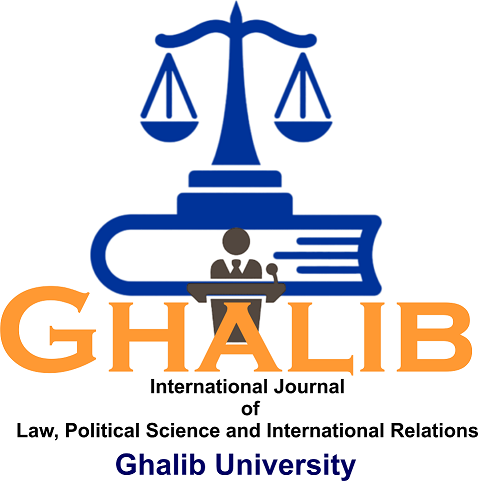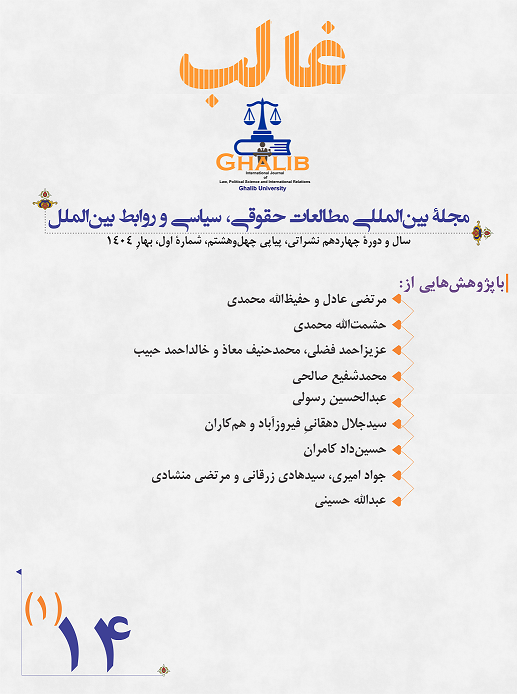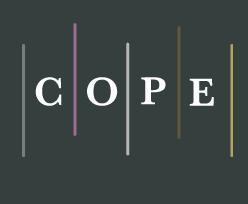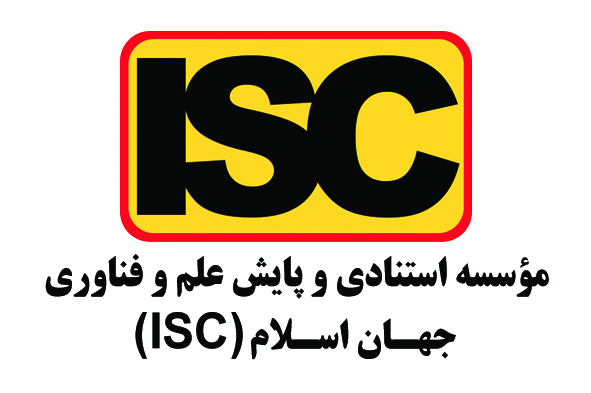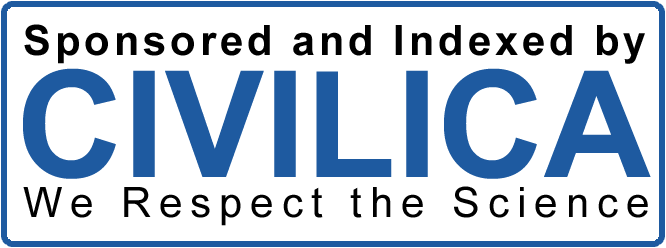نقش سیاست خارجی و دستگاه دیپلُماسی افغانستان در مبارزه با مواد مخدر
DOI:
https://doi.org/10.58342/ghalibqj.V.14.I.1.4واژهگانِ کلیدی:
افغانستان، سیاست خارجی، دستگاه دیپلماسی، مبارزه با مواد مخدرچکیده
مبارزه با مواد مخدر یکی از جدّیترین چالشهای افغانستان است. این تحقیق به بررسی نقش سیاست خارجی و دیپلماسی افغانستان در مدیریت این بحران از طریق تقویت همکاریهای منطقهیی و بینالمللی پرداخته است. اهمیت این تحقیق در تبیین فرصتهای همکاری با کشورهای دیگر و سازمانهای بینالمللی برای مقابله با تولید، قاچاق و مصرف مواد مخدر نهفته است. پرسش اصلی تحقیق این بوده است که: چهگونه سیاست خارجی و دستگاه دیپلماسی افغانستان میتوانند از طریق تقویت همکاریهای بینالمللی و منطقهیی، نقشی مؤثر در کاهش بحران مواد مخدر ایفا کنند؟ این مطالعه با رویکرد مختلط و استفاده از روشهای تحلیلی و توصیفی انجام شده و دادهها از منابع کتابخانهیی گردآوری و تحلیل شدهاند. یافتهها نشان میدهند که: سیاست خارجی و دیپلُماسی افغانستان میتوانند با بهرهگیری از همکاریهای منطقهیی، استفاده از معاهدات بینالمللی، و جذب کمکهای فنّی و مالی، تأثیر مثبتی در کاهش تولید و قاچاق مواد مخدر داشته باشند؛ همچنین، ارتقای ظرفیتهای دستگاه دیپلُماسی، توسعة روابط با کشورهای مسیر ترانزیت و اجرای برنامههای مشترک ضد مواد مخدر از اهمیت بالایی برخوردار است. این اقدامات میتوانند به کاهش معضلات امنیتی، اقتصادی و اجتماعی مرتبط با مواد مخدر کمک کرده و تصویر افغانستان را بهعنوان یک شریک فعّال در مبارزة جهانی با مواد مخدر تقویت کنند. نتایج تحقیق میتواند به سیاستگذاران و محققان در تدوین استراتیژیهای مؤثرتر برای مقابله با این بحران کمک کند.
سرچشمهها/ منابع
Amirkhizi, Mohammad Reza. (1999). “International Community’s Measures in Combating Narcotics.” Foreign Policy Journal, pp. 953–966. http://ensani.ir/fa/article/97942] In Persian[
Jalali, Reza; Almasi, Fazel. (2010). “Challenges Facing NATO in Establishing Security in Afghanistan.” Daneshnameh (Political Science), (78), pp. 39–62. https://sid.ir/paper/91286/fa] In Persian[
Dastaranj, Shahram. (2017). Diplomacy of Combating Narcotics. Mashhad: Asar-e Fekr.] In Persian[
Yazdani, Enayatollah; Badakhshan, Mojtaba. (2014). “The Impact of Narcotics Production and Trade on Afghanistan’s Security (Post-2001).” Iranian Journal of International Politics Research, 3(1), pp. 118–140. https://doi.org/10.22067/jipr.v3i15.42127] In Persian[
Bayer, I. (1989). Development of the Convention on Psychotropic Substances, 1971. Unpublished manuscript. https://bpb-us-e1.wpmucdn.com/blogs.uoregon.edu/dist/3/14638/files/2021/08/Spring2021Volume19.pdf
Byrd, W., & Ward, C. (2004). Drugs and development in Afghanistan. https://documents1.worldbank.org/curated/en/156391468740439773/pdf/30903.pdf
Cordesman, A. H. (2022). Civil Half of the Afghan War: Dealing with the Political, Governance, Economics, Corruption, and Drug Threats. Center for Strategic and International Studies (CSIS). https://csis-website-prod.s3.amazonaws.com/s3fs-public/publication/171206_Afghanistan_The_Other_Half_of_the_War.pdf
Corti, D., & Swain, A. (2009). War on drugs and war on terror: Case of Afghanistan. Peace and Conflict Review, 3(2), 41-53. https://citeseerx.ist.psu.edu/document?repid=rep1&type=pdf&doi=84d36cc7d6886ab46d8471f9a4badb24b19121f2
Coyne, C. J., Blanco, A. R. H., & Burns, S. (2016). The war on drugs in Afghanistan: another failed experiment with interdiction. The Independent Review, 21(1), 95-119. https://papers.ssrn.com/sol3/Delivery.cfm?abstractid=2613428
Crick, E. (2012). Drugs as an existential threat: An analysis of the international securitization of drugs. International Journal of Drug Policy, 23(5), 407-414. https://www.academia.edu/download/25314931/CrickE_Drugs_as_an_existential_threat_2012.pdf
Demirbuken, H. (2016). Drug Money Flows and Its Links with Terrorism Financing: The Case of Afghanistan. In Countering Terrorist Recruitment in the Context of Armed Counter-Terrorism Operations (pp. 119-129). IOS Press. https://ebooks.iospress.nl/volumearticle/42168
Don, A. E. (2014). Lighten Up: Amending the Single Convention on Narcotic Drugs. Minn. J. Int'l L., 23, 213. https://scholarship.law.umn.edu/cgi/viewcontent.cgi?article=1278&context=mjil
Felbab-Brown, V. (2016). No easy exit: Drugs and counternarcotics policies in Afghanistan. Washington DC: Brookings. https://www.brookings.edu/wp-content/uploads/2016/07/FelbabBrown-Afghanistan-final.pdf
Goodhand, J. (2005). Frontiers and wars: the opium economy in Afghanistan. Journal of Agrarian Change, 5(2), 191-216. https://www.academia.edu/download/50636978/Frontiers_and_Wars_the_Opium_Economy_in_20161130-24006-1wtlv5m.pdf
Jenner, M. S. (2011). International drug trafficking: A global problem with a domestic solution. Indiana Journal of Global Legal Studies, 18(2), 901-927. https://www.repository.law.indiana.edu/cgi/viewcontent.cgi?article=1465&context=ijgls
Jones, S. G. (2006). Averting failure in Afghanistan. Survival, 48(1), 111-128.
https://www.tandfonline.com/doi/abs/10.1080/00396330600594306
Kienberger, S., Spiekermann, R., Tiede, D., Zeiler, I., & Bussink, C. (2017). Spatial risk assessment of opium poppy cultivation in Afghanistan: integrating environmental and socio-economic drivers. International Journal of Digital Earth, 10(7), 719-736 https://scholar.google.com/scholar?output=instlink&q=info:kxwwGLQ7KcJ:scholar.google.com/&hl=en&as_sdt=0,5&scillfp=7412231606744154485&oi=lle
Kutty, S. N. (2014). Iran's Continuing Interests in Afghanistan. The Washington Quarterly, 37(2), 139-156. https://papers.ssrn.com/sol3/Delivery.cfm?abstractid=2463490
Mansfield, D., & Pain, A. (2008). Counter-narcotics in Afghanistan: The failure of success?. Kabul: Afghanistan Research and Evaluation Unit. https://gisf.ngo/wp-content/uploads/2014/09/0020-Mansfield-Pain-2008-Counter-narcotics-in-Afghanistan8.pdf
Mansfield, D. (2006). Responding to the challenge of diversity in opium poppy cultivation in Afghanistan. Introduction And Overview, 47. https://documents1.worldbank.org/curated/es/151161467996726308/pdf/389310AF0Drug0industry0Nov200601PUBLIC1.pdf#page=55
Mejía, D., & Restrepo, P. (2008). The war on illegal drug production and trafficking: An economic evaluation of Plan Colombia. Documento CEDE, (2008-19). https://papers.ssrn.com/sol3/Delivery.cfm?abstractid=1485690
Modebadze, V. (2022). Afghanistan under Taliban: a new regime poses a threat to international stability. Journal of Liberty and International Affairs, 8(1), 277-291. https://e-jlia.com/index.php/jlia/article/download/488/282
Morales, W. Q. (1989). The war on drugs: a new US national security doctrine?. Third World Quarterly, 11(3), 147-169. https://www.researchgate.net/profile/Waltraud_Morales/publication/261578921_The_war_on_drugs_A_new_US_national_security_doctrine/links/54fb63b70cf270426d0dcc1a/The-war-on-drugs-A-new-US-national-security-doctrine.pdf
Rinaldi, M., Pedrason, R., & Wirajuda, M. H. (2024). Indonesia's Foreign Policy in Dealing with Non-Traditional Threats (Case Study Drugs Trafficking in Indonesia). East Asian Journal of Multidisciplinary Research, 3(2), 773-786. https://journal.formosapublisher.org/index.php/eajmr/article/download/8520/8353
Saghafi-Ameri, N. (2010). The “Afghan Drugs” Problem–A challenge to Iran and International security. Iranian review of foreign affairs, 1(2), 213-235. https://www.unodc.org/documents/islamicrepublicofiran/publications/IRIRAN/The_Afghan_Drugs_Problem_and_Iran-Saghafi-Ameri-2010.pdf
Stepanova, E. (2012). Illicit drugs and insurgency in Afghanistan. Perspectives on terrorism, 6(2), 4-18. https://jamesforest.com/wp-content/uploads/2017/04/6-2.pdf
Stippel, J. A., & Serrano-Moreno, J. E. (2020). The coca diplomacy as the end of the war on drugs. The impact of international cooperation on the crime policy of the Plurinational state of Bolivia. Crime, Law and Social Change, 74(4), 361-380. https://www.researchgate.net/publication/341032837_The_coca_diplomacy_as_the_end_of_the_war_on_drugs_The_impact_of_international_cooperation_on_the_crime_policy_of_the_Plurinational_state_of_Bolivia
United Nations. (1991). United Nations Convention Against Illicit Traffic in Narcotic Drugs and Psychotropic Substances, 1988: Adopted by the Conference at Its Sixth Plenary Meeting on 19 December 1988. New York: United Nations.
Xinwei, L. (2019). The drug situation and the practice of drug control in Afghanistan. Himalayan and Central Asian Studies, 23(3/4), 194-0_4. https://search.proquest.com/openview/debe8ba46bf97cc550c203a2d4a1bda4/1?pq-origsite=gscholar&cbl=1036373
Blanchard, C. M. (2007, December). Afghanistan: Narcotics and us policy. Congressional Information Service, Library of Congress. https://apps.dtic.mil/sti/pdfs/ADA506102.pdf
چاپ شده
ارجاع به مقاله
شماره
نوع مقاله
مجوز
حق نشر 2025 عزیزاحمد فضلی،محمدحنیف معاذ،خالداحمد حبیب

این پروژه تحت مجوز بین المللی Creative Commons Attribution 4.0 می باشد.
